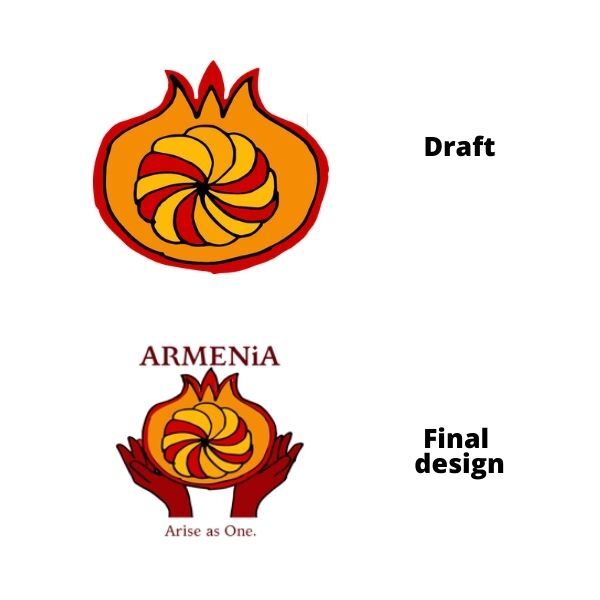Celebrating cultures through design
Graphic design has always been a part of the MYP Design course at CIS. Over the years the focus has varied, but the students have always been presented with a meaningful and authentic design challenge, and the opportunity to develop highly valuable transferable skills.
Promoting intercultural awareness
Over the last three years, our grade 9 students have been challenged to celebrate and promote the cultural diversity of CIS’s community, while also expanding their international-mindedness. This has been achieved through the development of "nation branding", with each student individually researching the culture of a specific country represented in the CIS community.
Going beyond the surface
The students' research takes their understanding beyond visible culture — "food, flags and fashion" — and allows them to develop insights into the deeper culture of the country. They are then challenged to use graphic design skills to create representative visual brand elements (a logo, a colour scheme, typography and a slogan).
One such example was the design by one of my students Anusha K. She based her project on the country of Armenia, and created a logo that incorporated different elements that are an important part of the Armenian culture.

Doing authentic research
Anusha explains the concept behind her design. “The hands represent the generosity that Armenians are known for. The pomegranate is one of the most recognisable symbols in Armenian culture because it represents fertility and good fortune. I also included the eternity symbol because it represents the eternal state of life and death, and it’s one of the most common symbols used by government agencies, NGOs and Armenian architecture. The colours are based on the red and yellow in the Armenian flag.”
As part of her assignment, Anusha was also required to contact appropriate experts and primary sources to gain feedback on her design. This can happen during the preliminary investigation stage, the design ideation stage or the evaluation process at the end of the project. Anusha decided to email the Armenian embassy and received a reply — with thoughtful praise and guidance — from the Ambassador herself, Ms H.E. Dziunik Aghajanian.
Following the Ambassador's suggestions, Anusha made a small adjustment to her design and shared the final version with the Ambassador who requested permission to use it in the embassy. Anusha not only confidently and respectfully communicated with a significant ‘client’, she was also able to immediately make changes to her design under the Ambassador’s guidance.

Ms Aghajanian says, “I was really pleased to see not only a very beautiful design but an insight into the Armenian traditional symbols that came as a pleasant surprise. The colours she used and their richness are reflective of those extensively used in Armenian art and culture. The slogan “Arise as one” encompasses in whole the essence of the Armenian nature and power. [It was] an amazing insight and beautiful depiction of the ideas.”
Authentic, real-world learning
While I had encouraged students to consider contacting embassies, consulates or official cultural associations for feedback, we cannot guarantee that our students will receive a response. However, we strongly believe in the deep and enduring impact of authentic primary research. This is a life skill that has value throughout school, university and beyond.
This unit is also considered a 'service learning unit' because it offers students the opportunity to develop service learning outcomes. Anusha not only made a positive connection with the wider community, she also demonstrated the IB trait of being a risk-taker. She can certainly feel proud that her work has been appreciated — by the Armenian ambassador, no less!
Developing global understanding
The nation branding project is more than just a graphic design project; it’s a valuable opportunity for students to step out of their comfort zones and gain a deeper understanding of cultures around the world.
Anusha says, “I didn't know much about Armenia at the beginning but after weeks of research and work, I realised that it was a beautiful country with generous people and many deep cultural elements. By doing this project, we learn about another country, and at the end of the project, we see everyone else's work and learn about many more countries.”
The students' completed brand concepts are presented in the form of a 'brand book' which includes the technical specifications and justifications for the design of each element.
Presenting to the community
In the past, students' finished brand elements were applied to physical products that were distributed during UN Week. With the restrictions on events this year, we found an alternative means of applying the students' nation brands within the school community. The students have been challenged to create original short animations. These have been displayed on screens across the campus, and on the CIS social media channels. A selection of students' work can be seen in the following video.